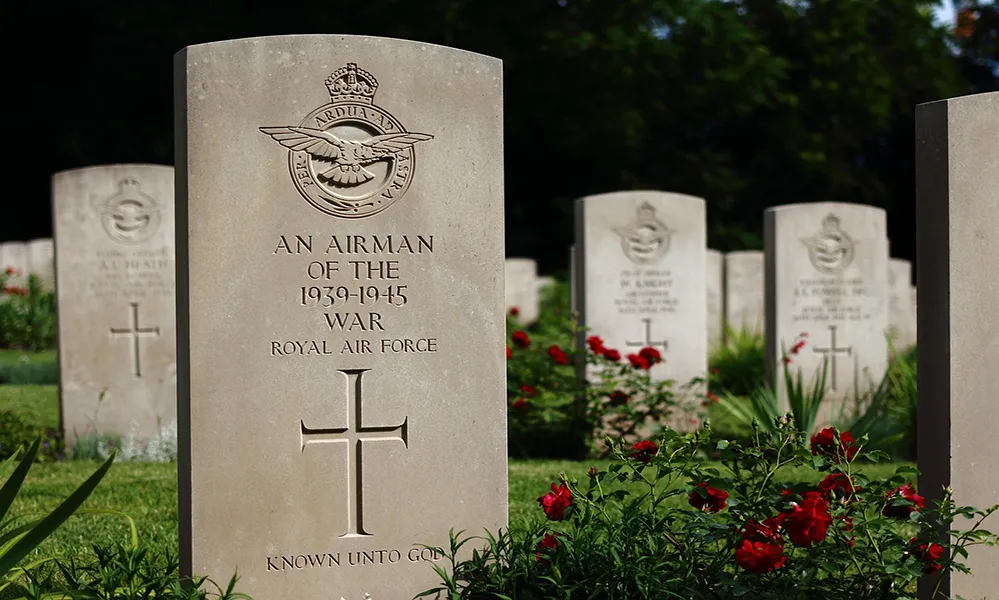Being an NHS GP isn’t easy. The system may be crap but it’s the patients who make it seem eminently worthwhile.
Some stick in the mind … for example, Charles Saville who had fought at El Alamein in WW2. The Allied victory there orchestrated by Montgomery was the beginning of the end of the Western Desert Campaign and a major morale booster. He used to stand to attention when he entered the consulting room and say: “Good morning, Sir.” I spotted that one of his ears had been neatly split in two. He told me that this was caused by shrapnel – which had fortunately been deflected by his binoculars, thereby sparing him catastrophic damage.
Another Second World War veteran was a Halifax bomber pilot called Stanley Emms, who survived something like 37 raids over Germany bringing his crew home safely on each occasion (when most just managed a handful of sorties before they were shot down). Both the Halifax and the Lancaster played significant roles in the Allied campaign, but the Lancaster is often more celebrated, while the Halifax is sometimes overlooked, despite its versatile contributions. It was acknowledged that it was just as critical in the Allied war effort and in securing victory in Europe.
During the whole war, 51% of aircrew were killed on operations. Only 24% survived the war unscathed.
The first time I twigged he had done something spectacular in the war was when he had a blood test. He wanted to know if his liver function tests were OK. I told them they were and asked him why he looked so surprised. It seemed the pilots used to consume rather a lot of scotch whenever they were off duty. Given their average life expectancy, I can understand that!
When the Royal Air Force Bomber Command Memorial (built to mark the sacrifice of 55,573 aircrew) was unveiled by the Queen, a car was sent for him and he was whisked down to London as a guest of honour.
I visited him once on Remembrance Sunday to check his TV was working as it had been playing up. It wasn’t working – and he was on his own. We managed to get it going and watched the cenotaph ceremony together. Like many survivors, though, he was reluctant to tell tales of derring-do. He said: “People are always asking me about it. I’ve spent my life trying to forget.”
He once had a medical problem in the night and called an ambulance. The crew told him: “We can take you to Broomfield but you’ll have to make your own way back.” He decided to stick it out and call us in the morning. Now I know the ambulance service is overstretched and it can’t be used as a taxi service (even for war heroes) … but I did just wonder how it would play out if the tables were turned and one of the paramedics was trying to hitch a lift in his bomber: “I can take you as far as Berlin, old chap, but I’m afraid you’ll have to make your own way back!”
He survived the war only to go missing in action in South Woodham. A relative moved him elsewhere without giving us any opportunity to say goodbye. You’d be amazed how often this happens – elderly folk who have been around for years if not decades – people we count as friends – are suddenly whisked away … and we never see or hear of them again.
Another example of this was Joy Stone who disappeared without trace overnight. She was the widow of the vicar at St Mary’s. It was widely known that he rather liked a small tipple – which evolved into a large tipple – and he therefore found the proximity of the church to the village pub a blessing. His spells in ‘The Bell’ following a service at St Mary’s were referred to locally as ‘thirst after righteousness’ (Matthew 5:6)
Joy offered to run an ‘art therapy’ session for us. I wasn’t entirely convinced that it would get off the ground but agreed to give it a try … and it turned out to be a runaway success. Patients who hadn’t drawn anything since their ‘stick-men’ era at kindergarten suddenly discovered that they had talent. Some even ended up selling their work. And those who weren’t quite up to this standard loved the congenial atmosphere. So thank you Joy …. wherever you are.
Two of my favourite patients were Brenda and Gordon Nisbit who fostered 97 kids in total, more often than not turning their lives round. You could tell from half a mile away on a misty day that they were the perfect foster parents. I recorded them talking about their lives on the eve of their retirement. Have a listen here if you want to be uplifted!
+++
As for the practice, I missed Hilary Allan and the practice missed having an omnipresent female doctor so McGeachy and I set about the difficult task of finding a doctor shacked up with somebody who could compensate for their meagre earnings (when judged by the standards set by comparable professionals.) We eventually found Dr Shirin Nimmo who was married to the local vet. She got stuck in and was well liked by both staff and patients … and so a new era began.
Dr John Cormack
